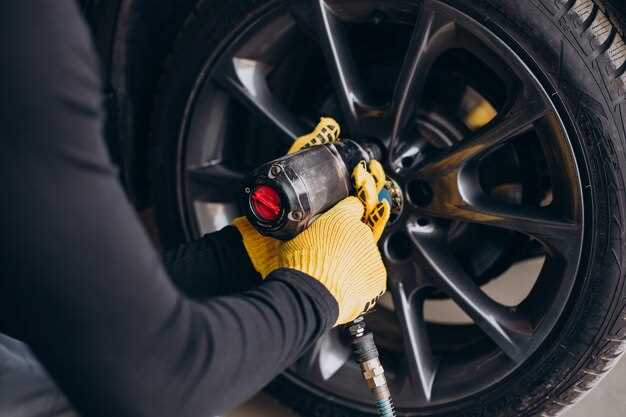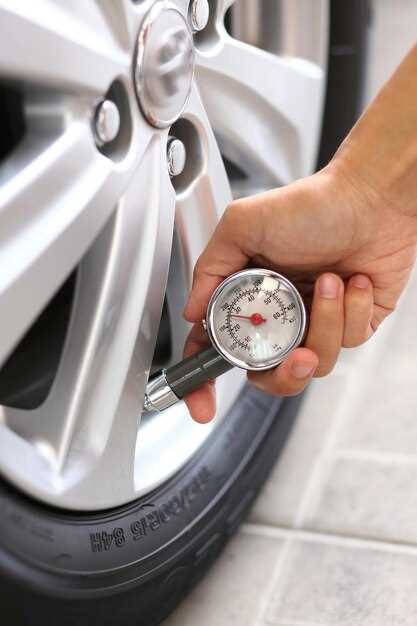
Best Practices for Maintaining Proper Tire Pressure
- Arthur Rodriquez
- 0
- Posted on

Maintaining the correct tire pressure is essential for ensuring the safety, performance, and longevity of your vehicle. Properly inflated tires improve fuel efficiency, enhance handling, and reduce the risk of tire blowouts. However, many drivers overlook this critical aspect of vehicle maintenance. In this article, we will share valuable tips to help you keep your tire pressure at optimal levels.
Regularly monitoring your tire pressure not only ensures safety but also contributes to a smoother driving experience. Tires that are either over-inflated or under-inflated can affect your vehicle’s stability and braking capabilities. Therefore, understanding the best practices for maintaining tire pressure is crucial for every driver. Follow our expert advice to maximize your vehicle’s performance and comfort on the road.
Equipping yourself with the right knowledge about tire care can make a significant difference in your driving experience. From understanding how to check the pressure accurately to knowing when to inflate or deflate your tires, implementing these best practices will empower you to take charge of your vehicle’s health. Stay tuned as we delve into practical steps for maintaining the ideal tire pressure.
How to Check Your Tire Pressure Accurately
Maintaining the right tire pressure is crucial for vehicle safety, fuel efficiency, and tire longevity. To achieve accurate results when checking your tire pressure, follow these steps:
First, gather the necessary tools: a reliable tire pressure gauge and a source of air, such as a compressor at a gas station. Ensure your tires are cold, as heat generated from driving can increase pressure readings. Ideally, check the pressure first thing in the morning or after the vehicle has been parked for several hours.
Next, locate the recommended pressure specifications for your vehicle. This information is typically found in the owner’s manual or on a sticker located on the driver’s side door jamb. The specified values may vary for front and rear tires.
Remove the valve stem cap from the tire you wish to check and firmly press the tire pressure gauge onto the valve stem. Ensure there is no hissing sound; if you hear it, reposition the gauge until you achieve a proper seal. Take note of the reading displayed on the gauge.
If the pressure is below the recommended level, use an air compressor to inflate the tire to the correct specification. If it is too high, release some air by pressing the metal stem in the valve. Always recheck the pressure after adjustments.
Finally, replace the valve stem cap and repeat the process with the remaining tires. Regular checks, ideally once a month, will help ensure your vehicle operates safely and efficiently.
Understanding the Impact of Temperature on Tire Pressure

Temperature plays a significant role in determining the pressure of your tires. As the temperature fluctuates, the air inside your tires expands or contracts, leading to variations in tire pressure. Generally, for every 10°F change in temperature, tire pressure can increase or decrease by approximately 1 psi (pound per square inch). This means that during hot summer days, tire pressure can rise, while colder winter temperatures may cause it to drop.
Maintaining the proper tire pressure is crucial for safety, fuel efficiency, and tire lifespan. Low tire pressure can cause increased friction, resulting in overheating and potential tire blowouts, while over-inflated tires can lead to reduced traction and uneven wear. Regularly checking your tire pressure and adjusting it according to seasonal changes is a proactive approach.
Here are some tips for managing your tire pressure in relation to temperature changes: First, conduct routine pressure checks at least once a month and before long trips. Always check tire pressure when the tires are cold, as heat from driving can give inaccurate readings. Second, consult your vehicle’s owner manual for the manufacturer’s recommended tire pressure, which may be different from the pressure listed on the tire sidewall. Third, consider investing in a reliable tire pressure monitoring system (TPMS) that alerts you of any significant pressure changes.
Lastly, don’t overlook the importance of visual inspections. Look for signs of wear, cracks, or punctures, as these can also affect tire pressure. By understanding the impact of temperature on tire pressure and following these tips, you can ensure that your tires remain in optimal condition, enhancing your vehicle’s performance and safety.
When and How to Inflate Your Tires Properly

Maintaining the correct tire pressure is crucial for safety and performance. Here are some tips on when and how to inflate your tires properly.
When to Inflate: Check your tire pressure at least once a month and before long trips. Tire pressure can fluctuate due to temperature changes; for every 10°F drop, your tire may lose about 1 PSI. Also, inspect your tires after encountering potholes or rough terrain, as these can cause sudden pressure loss.
How to Inflate: First, ensure that you have an accurate pressure gauge. Remove the valve cap from your tire and press the gauge onto the valve stem. Compare the reading with the recommended PSI found in your vehicle’s owner manual or on the sticker inside the driver’s door. If the pressure is low, use an air compressor to add air until it reaches the desired level. Be sure to avoid over-inflation, which can lead to a harsher ride and increased risk of blowouts.
After inflating, replace the valve cap securely to prevent dirt from entering. Repeat this process for all tires, including the spare, ensuring they are all at the correct pressure.
Regularly checking and maintaining proper tire pressure enhances fuel efficiency, minimizes tire wear, and contributes to overall vehicle safety.